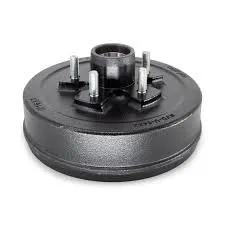
-
 Afrikaans
Afrikaans -
 Albanian
Albanian -
 Amharic
Amharic -
 Arabic
Arabic -
 Armenian
Armenian -
 Azerbaijani
Azerbaijani -
 Basque
Basque -
 Belarusian
Belarusian -
 Bengali
Bengali -
 Bosnian
Bosnian -
 Bulgarian
Bulgarian -
 Catalan
Catalan -
 Cebuano
Cebuano -
 Corsican
Corsican -
 Croatian
Croatian -
 Czech
Czech -
 Danish
Danish -
 Dutch
Dutch -
 English
English -
 Esperanto
Esperanto -
 Estonian
Estonian -
 Finnish
Finnish -
 French
French -
 Frisian
Frisian -
 Galician
Galician -
 Georgian
Georgian -
 German
German -
 Greek
Greek -
 Gujarati
Gujarati -
 Haitian Creole
Haitian Creole -
 hausa
hausa -
 hawaiian
hawaiian -
 Hebrew
Hebrew -
 Hindi
Hindi -
 Miao
Miao -
 Hungarian
Hungarian -
 Icelandic
Icelandic -
 igbo
igbo -
 Indonesian
Indonesian -
 irish
irish -
 Italian
Italian -
 Japanese
Japanese -
 Javanese
Javanese -
 Kannada
Kannada -
 kazakh
kazakh -
 Khmer
Khmer -
 Rwandese
Rwandese -
 Korean
Korean -
 Kurdish
Kurdish -
 Kyrgyz
Kyrgyz -
 Lao
Lao -
 Latin
Latin -
 Latvian
Latvian -
 Lithuanian
Lithuanian -
 Luxembourgish
Luxembourgish -
 Macedonian
Macedonian -
 Malgashi
Malgashi -
 Malay
Malay -
 Malayalam
Malayalam -
 Maltese
Maltese -
 Maori
Maori -
 Marathi
Marathi -
 Mongolian
Mongolian -
 Myanmar
Myanmar -
 Nepali
Nepali -
 Norwegian
Norwegian -
 Norwegian
Norwegian -
 Occitan
Occitan -
 Pashto
Pashto -
 Persian
Persian -
 Polish
Polish -
 Portuguese
Portuguese -
 Punjabi
Punjabi -
 Romanian
Romanian -
 Russian
Russian -
 Samoan
Samoan -
 Scottish Gaelic
Scottish Gaelic -
 Serbian
Serbian -
 Sesotho
Sesotho -
 Shona
Shona -
 Sindhi
Sindhi -
 Sinhala
Sinhala -
 Slovak
Slovak -
 Slovenian
Slovenian -
 Somali
Somali -
 Spanish
Spanish -
 Sundanese
Sundanese -
 Swahili
Swahili -
 Swedish
Swedish -
 Tagalog
Tagalog -
 Tajik
Tajik -
 Tamil
Tamil -
 Tatar
Tatar -
 Telugu
Telugu -
 Thai
Thai -
 Turkish
Turkish -
 Turkmen
Turkmen -
 Ukrainian
Ukrainian -
 Urdu
Urdu -
 Uighur
Uighur -
 Uzbek
Uzbek -
 Vietnamese
Vietnamese -
 Welsh
Welsh -
 Bantu
Bantu -
 Yiddish
Yiddish -
 Yoruba
Yoruba -
 Zulu
Zulu
Jan . 23, 2025 03:16
Back to list
difference between drum and disc brake master cylinders
When delving into the world of automotive braking systems, a key component often at the forefront is the master cylinder. While seemingly mundane, this vital part significantly contributes to safe and effective braking. Delving deeper reveals the distinct differences between drum and disc brake master cylinders—each serving unique purposes in vehicles equipped with different brake types. Understanding these differences can help in making informed decisions regarding vehicle maintenance and upgrades.
Conversely, disc brakes, known for their self-adjusting nature, require minimal manual adjustments. The master cylinder plays a pivotal role in ensuring consistent hydraulic pressure delivery, vital for the effective operation of the calipers. Despite requiring less frequent attention, disc systems benefit significantly from periodic checks to uphold performance levels, focusing on seal integrity and fluid condition. When considering upgrades or conversions from drum to disc brakes, the master cylinder must not be overlooked. Transitioning to a disc brake system necessitates a compatible master cylinder capable of withstanding higher pressures and delivering swift hydraulic responses. Opting for a master cylinder designed specifically for disc brakes ensures the braking system works efficiently and safely. Appreciating the differences in master cylinder designs emphasizes the need for specialized knowledge in automotive maintenance. For those in the automotive industry, this understanding is essential, enhancing the capacity to advise vehicle owners appropriately. Using the correct master cylinder matching the brake system type not only prolongs the lifespan of braking components but also upholds the vehicle's safety standards—an invaluable assurance for drivers. In summary, while both drum and disc systems serve the primary function of stopping a vehicle, the design and function of their respective master cylinders differ significantly. Comprehending these distinctions enhances expertise and ensures that maintenance practices are both accurate and effective. This knowledge reinforces a vehicle's braking reliability, ultimately ensuring safety and peace of mind for every drive.


Conversely, disc brakes, known for their self-adjusting nature, require minimal manual adjustments. The master cylinder plays a pivotal role in ensuring consistent hydraulic pressure delivery, vital for the effective operation of the calipers. Despite requiring less frequent attention, disc systems benefit significantly from periodic checks to uphold performance levels, focusing on seal integrity and fluid condition. When considering upgrades or conversions from drum to disc brakes, the master cylinder must not be overlooked. Transitioning to a disc brake system necessitates a compatible master cylinder capable of withstanding higher pressures and delivering swift hydraulic responses. Opting for a master cylinder designed specifically for disc brakes ensures the braking system works efficiently and safely. Appreciating the differences in master cylinder designs emphasizes the need for specialized knowledge in automotive maintenance. For those in the automotive industry, this understanding is essential, enhancing the capacity to advise vehicle owners appropriately. Using the correct master cylinder matching the brake system type not only prolongs the lifespan of braking components but also upholds the vehicle's safety standards—an invaluable assurance for drivers. In summary, while both drum and disc systems serve the primary function of stopping a vehicle, the design and function of their respective master cylinders differ significantly. Comprehending these distinctions enhances expertise and ensures that maintenance practices are both accurate and effective. This knowledge reinforces a vehicle's braking reliability, ultimately ensuring safety and peace of mind for every drive.
Latest news
-
What Are Drum BrakesNewsJul.07,2025
-
Understanding Brake Drum MaterialNewsJul.07,2025
-
Semi-Trailer Brake Drum: A Key Component for Extreme Loads and Long-Distance TransportNewsJul.07,2025
-
Drum Brake Pads for SaleNewsJul.07,2025
-
Brake Drums for SaleNewsJul.07,2025
-
Brake Drum ManufacturerNewsJul.07,2025
-
Aluminum Brake Drums: The Future of High-Performance CarsNewsJul.07,2025
